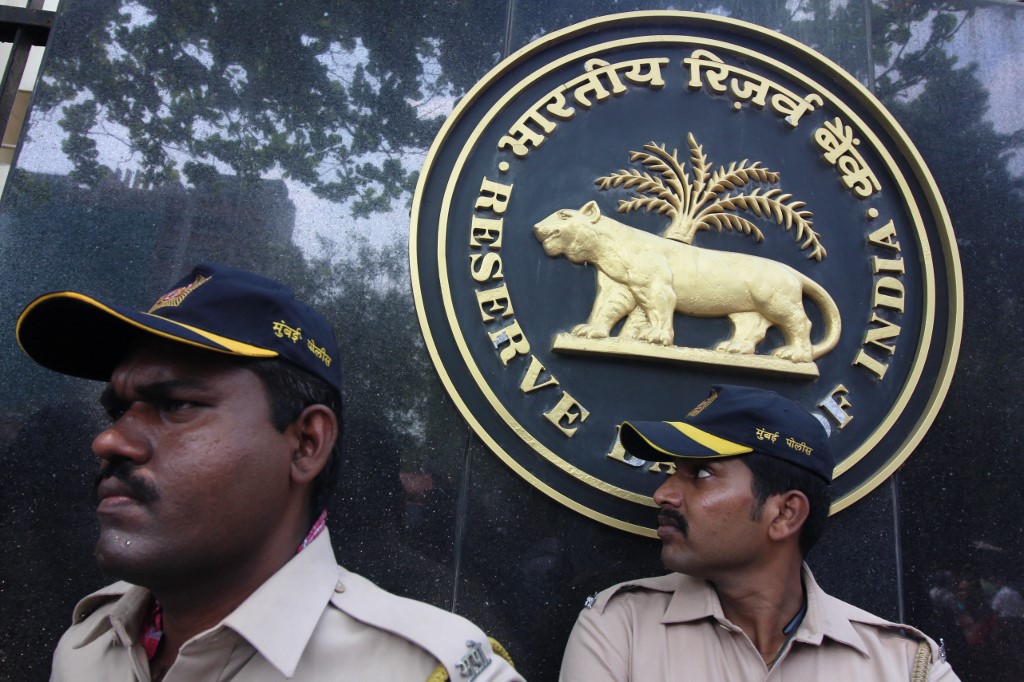(ATF) Flush with funds in its coffers, the Reserve Bank of India announced on Monday that the government was cancelling the financial year’s last sovereign bond auction. The move instantly cooled yields of the benchmark 10-Year Government Bond (called G-Secs) by four basis points.
The government decided to cancel the auction after a review of its cash balances, the central bank said in a statement.
While expected, as such a move triggers a year-end bond rally that helps state-owned banks to report handsome mark-to-market gains – and pay higher dividends to the government. The cancellation also indicates that the central bank is not comfortable with rising bond yields that has recently become a global phenomenon.
“India is actively managing bond yields particularly at the long end, and the cancellation is part of a larger toolkit for regulating the bond yields and maintaining a level the RBI is comfortable with,” chief economist at HDFC Bank Abheek Barua told Asia Times Financial.
“The objective of this cancellation was softening the rising 10-year sovereign bond yield because higher bond yields hit the profits of state-owned banks and compromise their ability to pay dividends to the government,” he said.
“However, the broad message that RBI is trying to convey is that the central bank is targeting a yield level within a certain range.”
He added that in the next fiscal year starting from April, the RBI is expected to use tools (such as open market operations and operation twists) to stabilise long-term yields and check the sudden rise of interest costs in the economy.
SPOOKING MARKETS
Spiking yields of government securities bonds the United States and India, coupled with India’s plan for higher borrowings have triggered concerns over the negative impact on other asset classes, especially stock markets, and even gold.
The yield on 10-year bonds in India, for instance, has moved up from the recent low of 6.06% (from 1st February) to 6.24% (on March 4th) in line with the rise in US yields, sending jitters through stock and gold prices.
Traditionally, when bond yields go up, investors start reallocating investments away from equities and into bonds, as they are much safer. As bond yields rise, the opportunity cost of investing in equities goes up, and equities become less attractive.
Besides, a rise in bond yields raises the cost of capital for companies, which in turn compresses the valuations of their stocks.
With the government planning to borrow over $165 billion in the fiscal April to March 2022 through G-Secs, the movement of yields will continue to be watched in the coming months, experts say.
“Overall, the policy normalisation, frontloading of borrowings, higher credit offtake and slow inflation normalisation may weigh in on bonds negatively. Besides, if the global reflation of trade continues, along with growth normalisation, it could push up global yields further during the year and could have a spillover effect on India as well,” Madhavi Arora, the lead economist at Emkay Global Financial Service, told ATF.
“The RBI will continue to strive to fix the artificially skewed yield curve and maintain its preference for curve flattening,” she said, adding that the RBI could also use tools such as short tenure specific purpose bonds and even a hike in reverse repo rate (the rate at which RBI borrows funds).
COFFERS FULL
Experts say the government’s overflowing coffers will also help the RBI to flatten the yield curve.
Direct tax revenues for the current financial year have reportedly exceeded the government’s expectations and were driven by a surge in advance tax collection from companies due to the economy recovering.
According to a report by The Indian Express, direct tax collection till March 16, was about $2.5 billion higher than the revised estimates.
Tax collection from businesses jumped nearly 7% year-on-year beating the revised estimates of a fall of 4% year-on-year. This is a huge improvement, according to analysts, given the 20% decline seen at the beginning of the year during the height of the Covid pandemic.
The RBI expects the economic recovery to continue. The overall picture that emerges is one of improving business conditions and expectations of sustaining this trend into the next few quarters, it says.
Consequently, bond yields are expected to remain range-bound.
“We believe that the 10-year yield could hover between 6.00% and 6.25% in the first half of financial year 2021-22 and between 6.25% and 6.50% in second half,” Arora said.
READ MORE:
Coupon payments, issuance uncertainty weigh on bond gauges
India reluctant to cede sovereign rights for global bond indices entry
























